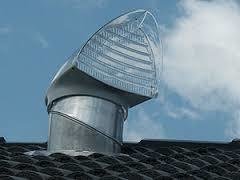Future Proofing – indoor air quality control
As a nation, we all want healthier, safer and more energy-efficient homes to live in.
This became evident during the leaky homes crisis of the mid 1990s and early 2000s, which shone a light on New Zealand’s low building standards and forced a national review of the weathertightness and durability of our residential buildings.
A decade later, the focus is still on weathertightness, as well as other factors interlinked and crucial to healthy homes.
One of those is the complex issue of indoor air quality control.
As Nick Gaites, director of Reveal Building Consultants and executive member of the New Zealand Institute of Building Surveyors (NZIBS) explains, New Zealand traditionally built homes that were generally uninsulated until the mid-1970s.
“Since then, building standards have risen with an emphasis on a minimum of insulation in the homes.”
The arrival of monolithic claddings to the market, that led to the leaky building crisis, also brought with them greater airtightness.
Increasingly, as our homes have become better sealed from the outside environment, indoor pollutants and moisture produced in the home are trapped inside. This has caused a fall in the indoor air quality.
Other pollutants can include tiny particles from cooking, mould spores and chemicals released by building materials.
In the pre-monolithic cladding days, homes were ventilated naturally thanks to air movement through the cladding system and the draughts around windows, doors and floors. However, higher airtightness has reduced that natural ventilation markedly.
“To significantly improve the health and liveability of our homes, we need to focus on getting control over the amount of air changes in our homes, install more than the minimum of insulation, have quality energy-efficient heating systems and adequate, controlled ventilation,” Nick says.
“It’s a challenge to get the balance of air changes, ventilation, insulation and heating right; that’s compounded by our mixed climate and difference in our climates throughout the country,”
New homes are easier to future proof because they can be designed to include the optimum combination of heating, insulation and ventilation.
But retrofitting existing properties affordably with these systems is the challenge for many New Zealanders. Often these dwellings are rental properties, though not exclusively., and substandard buildings are common in New Zealand.
According to Nick, until legislation requires measurable standards for air changes and indoor air quality, it will be very difficult to achieve greater indoor air quality across the board in New Zealand.
“It’s feasible that as happened in the US, provisions for indoor air quality could be driven by legal challenges, just as the leaky homes crisis drove changes to the building code around the weathertightness of the building envelope.”
A standard developed for indoor air quality in the United States, specifically for residences, and regularly updated is an excellent model to follow, Nick says.
“The ASHRAE 62.2 standard defines the roles of, and minimum requirements for, mechanical and natural ventilation systems.
“It also outlines the building envelope intended to provide acceptable indoor air quality in low-rise residential buildings.”
ASHRAE is a global society that is advancing human well-being through sustainable technology for the built environment.
The society and its members focus on building systems, energy-efficiency, indoor air quality, refrigeration and sustainability within the industry.
Through research, standards writing, publishing and continuing education, they strive to improve the built environment.
When Australia reviews its building code next year, Nick expects indoor air quality and airtightness provisions will be included.
“At some stage New Zealand would be likely to follow. There were already groups in the building sector lobbying for indoor air quality standards to be raised.”
Recently, two United States building science experts, Dr Max Sherman and Dr Iain Walker from the Lawrence Berkeley National Laboratory, visited Auckland and were hosted by Pro Clima, a manufacturer of air and weathertightness patented building systems, to talk about the US experience with indoor air quality control.
Nick attended on behalf of the NZIBS, a national body of professional building consultants who have extensive knowledge and experience in construction and building related matters.
He says the message from the US experts was that the higher standards in the United States for indoor air quality, modelled or based on ASHRAE 62.2, have delivered huge benefits, not only healthier indoor environments but savings in national health spending.
“The US experts said houses are deemed uninhabitable if 20 degrees Celsius can’t be maintained – imagine that in New Zealand.”


